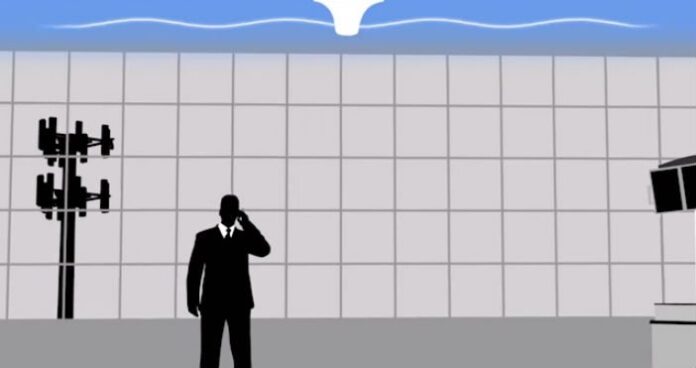In a previous post on RCR Wireless News, we discussed near-far and its “Effect on In-Building DAS Performance.” Near-Far is a term describing performance reduction when a mobile device is operating within a distributed antenna system’s coverage area, but is being serviced by a distant macro cell tower.
Near-Far affects people on the DAS as well as those in the DAS coverage area who are not on the DAS. When people on the DAS are affected, the instance is known as uplink Near-Far. Conversely, when those not on the DAS are affected, it is known as downlink Near-Far. Today we will focus primarily on uplink Near-Far.
Uplink Near-Far overview
DASs are usually designed to provide downlink signal levels strong enough to maintain dominance over signals penetrating the building from macro sites in the frequency band(s) of interest. By doing this, mobile devices operating in the frequency bands on the DAS will transmit at a lower power than if they were connecting to a distant macro site.
DAS remotes are designed with protection circuits, commonly known as automatic gain control, on the uplink path in the remote to avoid overdriving the system. In normal operation with all mobile devices in the DAS coverage area participating on the DAS, the power in the uplink path will typically be below the need for protection mechanisms so uplink gain control will not be activated.
If a mobile device is in the DAS coverage but not operating on a frequency band covered by the DAS, these nonparticipants will be serviced by a distant macro cell tower. To communicate with the macro cell tower, the nonparticipant’s device must be transmitting at much higher power than the devices on the DAS.
Because the filtering in typical DAS remotes is broadband, the signal from the participant and the nonparticipant devices are both received by the DAS remote. When strong LTE signals from the nonparticipant(s) begin to overdrive the DAS remote receivers, non-linearities appear across the entire band. Ideally, AGC prevents the non-linearities from polluting spectrum; however, when optimizing uplink noise figure over distortion, there may be some spectral purity degradation. Unfortunately, when AGC is activated, it not only reduces the power of the nonparticipant, it also reduces the power of the participant. Therefore, the signal to noise ratio of the participant will ultimately decrease and/or the degraded conditions induced by the overdriven receive path will ultimately get worse.
The effect of uplink Near-Far on a DAS
Some examples of degraded performance include: slow data rates; poor voice quality; and/or loss of service. In some cases, the base station servicing the DAS may increase the transmit power of the mobile device to maintain the signal to noise ratio and system performance. If this occurs, the device will consume more power resulting in reduced battery life. Furthermore, if more than one nonparticipant is in the DAS coverage area, the combined signal will be received by the DAS resulting in higher AGC attenuation and, ultimately, a more significant impact on the participants’ performance.
As nonparticipants move closer to a DAS antenna, the unwanted signal strength received at the DAS remote will increase, resulting in greater AGC attenuation and higher impact on participants’ device performance. The participants’ mobile devices may power up more, further decreasing the battery life. If the mobile devices do not – or cannot – increase transmit power, the services will degrade. Depending on the nonparticipants’ signal strength received at the DAS remote, the participants’ service could degrade until they lose total service.
Watch for additional information, presented by Westell, on downlink Near-Far in future editions of RCR Wireless News.
For a quick informational overview on near-far, please check out this Westell video.
https://youtu.be/uANAWKVfCB4

